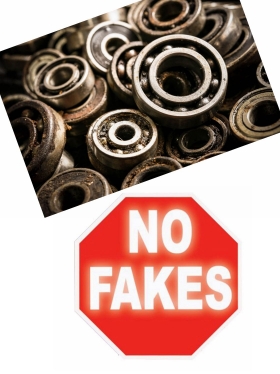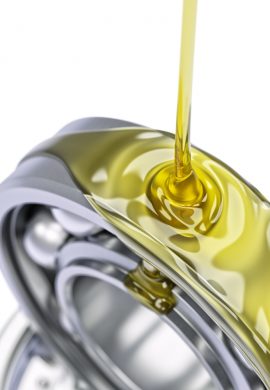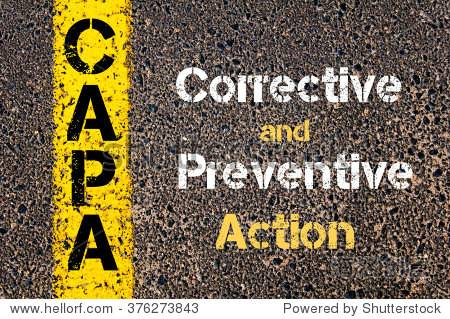When someone tell you that your bearings are expansive Tell them it is not expansive but WORTHY. When someone says your bearings are expansive, answer them like this: Porsche, Land Rover are expansive, but more and more people drive them.Santana is cheap, but it is eliminated by more and more peopleNokia is cheap, Iphone is expansive, but more and more people use Iphone and it made Apple the most valuable company in the world, while at the same time, Nokia went bankruptcy. Why that happened? Because clients never only focus on price, but value~ You can never buy the best quality things by the least money, that’s the truth of money. When someone says your bearings are expansive, answer them like this: The costs of products is not much, but can you build a house all by yourself if we provide you steel & cement?Can you cut the tumour out if we provide you a scalpel?Can you play NBA if we provide you basketball?Can you cut your own hair if we provide you scissors? We should learn to respect others’ rich experience and excellent skills by years’ of time and efforts. We spend so much time and effort only aiming to provide you with much better products…
Bearings made by normal steel or carbon steel, or even repaired from defective ones, e.g. GCr15 V.S. GCr9… Unqualified bearings counterfeit big brand products, from bearing marking to outside packaging & quality certification. The seller counterfeits authorized distributor or sales office of big brands. The seller sells second-hand products but at best quality price. The seller passes normal grade to high-grade ones. The seller mixes up or adulterates products, passes fake imitations for genuine. Fake price: fake bearings in authentic price, authentic bearings in high price. If buyer request cheap price, the seller gives bad bearings; if requested high quality, the seller gives qualified ones.
Custom linear bearings can help solve unique problems. Understanding what situations demand a custom linear bearing is key. Each application is a little bit different. For every load that can be perfectly supported by a stock bearing, there are others that require a customized solution. A project may involve specialized environments, extreme performance demands, tight scheduling, and more. Let’s focus on some of the techniques engineers can use to achieve the system characteristics they want. Most of the conversations that we have with people about customization occur when they’re developing a new product and building their first unit. They may have empirically discovered some undesirable characteristic in their system such as excess vibration or a structural element that leans enough to act as an overhung load. Modeling is important, but you can’t really guess what’s going to happen with a high degree of accuracy until you build the system. Designing for Vacuum Clean-room and vacuum applications have very strict requirements for particulate control. Any time components are in motion, you run the risk of generating particles. Grease can minimize friction, and thus particulation, but many formulations outgas, which can compromise the vacuum. Clean-room greases are designed to address both of…
“Bearings are as good as their lubrication”. The lubrication is the most important factor for bearing life. Several actual statistics show that incorrect lubrication causes more than 50% of premature bearing failures.A correct lubrication must cover: 1. The correct lubricant. Oil or grease? Viscosity? Temperature range? Anticorrosive properties? EP properties? Consistency of the grease? Etc. 2. The correct lubrication system. Oil: Oil bath? Oil splash system? Circulating Oil? Oil mist? Air-oil? Etc. Grease: Greased for life? Manual relubrication? Automatic centralized system? Automatic lubricators? Etc. 3. Place for the correct application. Oil or grease must be applied in the correct place so that the flow of the lubricant goes correctly to/through the bearings in the most efficient way. Example: The W33 groove with holes in the outer ring of spherical roller bearings. 4. The correct quantity of lubricant. Excess of lubricant may be as bad as to little lubricant. Excess of lubricant will increase the friction and this will increase the operating temperature which will destroy the lubricant. Lack of lubricant will logically not create the required lubricating film and metal to metal contact will take place in between the rolling elements and the raceways of the rings of the bearings….
Introduction to Six Sigma In today’s information age, news spreads faster than ever. When an event happens halfway around the world it can become common knowledge within hours or even minutes. Companies must guard their reputation for producing quality products. A single, significant quality incident could result in irreparable damage to brand equity and consumers trust. While there are many quality systems in use today, one methodology has gained tremendous momentum and acceptance throughout industry. The foundational elements of this system can be traced back to the 19th century. In the 1920s, Walter Shewert, a renowned statistician, and sometimes referred to as “the father of statistical quality control”, demonstrated that when process variation reaches three sigma from the mean or average value, the process requires correction. An engineer working for Motorola named Bill Smith later coined the term Six Sigma. Bill Smith, along with Mikel Harry and Bob Galvin, the then CEO of Motorola, developed a new Quality Management System (QMS) that emphasized the relationship between product performance and the corrections required during manufacture. Their four phase system became the basis on which the current Six Sigma methodology was built. The four phases were Measure, Analyze, Improve and Control. What is Six…
Introduction to Failure Mode and Effects Analysis (FMEA) There are numerous high-profile examples of product recalls resulting from poorly designed products and/or processes. These failures are debated in the public forum with manufacturers, service providers and suppliers being depicted as incapable of providing a safe product. Failure Mode and Effects Analysis, or FMEA, is a methodology aimed at allowing organizations to anticipate failure during the design stage by identifying all of the possible failures in a design or manufacturing process. Developed in the 1950s, FMEA was one of the earliest structured reliability improvement methods. Today it is still a highly effective method of lowering the possibility of failure. What is Failure Mode and Effects Analysis (FMEA) Failure Mode and Effects Analysis (FMEA) is a structured approach to discovering potential failures that may exist within the design of a product or process. Failure modes are the ways in which a process can fail. Effects are the ways that these failures can lead to waste, defects or harmful outcomes for the customer. Failure Mode and Effects Analysis is designed to identify, prioritize and limit these failure modes. FMEA is not a substitute for good engineering. Rather, it enhances good engineering by applying…
Introduction to Problem Solving In the current world market, consumers and organizations have a vast amount of choices regarding the brand or manufacturer of products, parts and materials available to them. In order to not merely survive but thrive in this ever increasingly competitive market, an organization must provide the most value and the highest quality possible. Most organizations have effective quality systems in place. Unfortunately, we cannot always prevent or detect problems before they reach the customer. Whether your customer is a Tier 1 automotive manufacturer or the end user, problems sometimes occur. Even the companies held up as benchmarks for quality in their industry eventually encounter problems with their product or process. The most important factors at that time are how timely and effectively the problem is resolved and prevented from re-occurring. Problems happen so we must be skillful and systematic in resolving the problems as they arise. What is Problem Solving Problem Solving is the process undertaken to find solutions to complex or difficult issues by taking an analytical approach using scientific methods. Effective problem solving requires the issue to be recognized and fully understood by the problem solver(s). Then, various problem solving methods and tools can…
Introduction to Corrective Action Preventive Action (CAPA) When illness strikes and we need medical attention, we put our trust in the medical products and care givers to provide relief. We expect the care we receive is without fault. Fortunately, failure is not experienced frequently in healthcare and medical devices. When failure does occur, we demand a rigorous process of investigation be initiated to identify why it occurred. Corrective Action Preventive Action (CAPA) is a process which investigates and solves problems, identifies causes, takes corrective action and prevents recurrence of the root causes. The ultimate purpose of CAPA is to assure the problem can never be experienced again. CAPA can be applied in many disciplines. A few of these disciplines are: Manufacturing Product Design Testing Verification and Validation Distribution, Shipping, Transport and Packaging Use-Applications What is Corrective Action Preventive Action (CAPA) Corrective Action Preventive Action (CAPA) is the result of a US FDA requirement, FDA 21 CFR 820.100. The CAPA requirement applies to manufacturers of medical devices and compels them to include CAPA in their Quality Management System (QMS). CAPA is split between two distinct but related functions. Corrective Action (CA) is an extension of Root Cause Analysis (RCA). The first goal of…
Now we have the correct equipment for the corresponding application and now comes the turn to the installation. An incorrect installation can reduce the useful life of an equipment due to premature failure caused by several defects. The effects are shown in the following graph: The most common errors in the installation of equipment that reduce the life of the bearings are: 1. Misalignment of the shaft in relation to the driving equipment. Perfectly aligned shafts avoid unnecessary loads on the bearings.It is very easy to detect alignments with vibration analysis and then confirm this cause by means of an analysis of the bearing failure.To avoid this cause of failure there is a large number of aligning instruments on the market that use lasers that are very precise and nowadays very friendly and easy to use without further training. 2. Unbalance. An unbalance also generates unnecessary loads that will cause premature bearing failures. To verify the balance, a vibration analysis must be used, which is able to detect this type of defect very precisely. 3. Mechanical looseness. This problem has increased lately because the designs are increasingly optimized by downsizing, which makes them lighter and less rigid. This defect in…
Bearings for Car Gearbox Bearings for Car Air Conditioning Compressor









